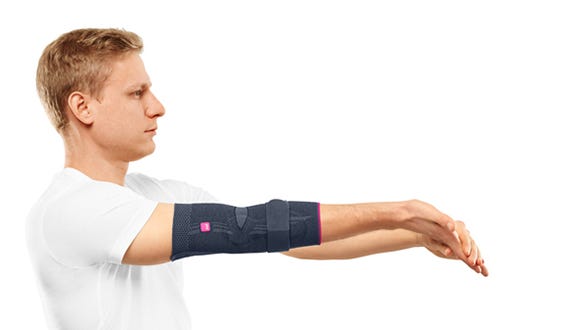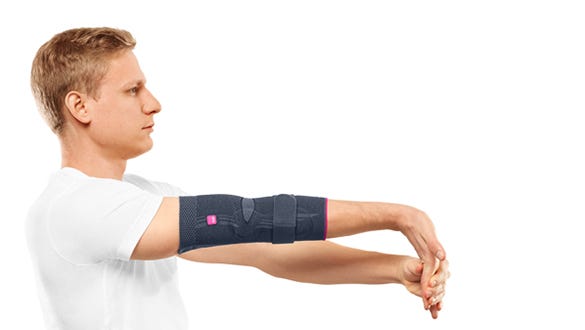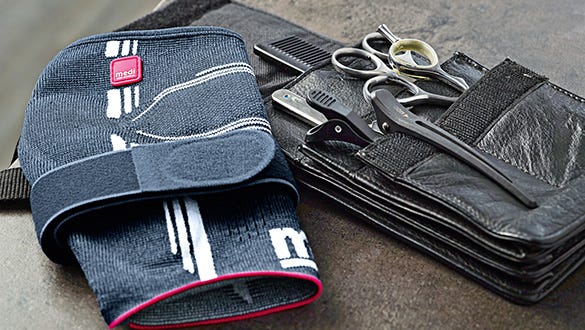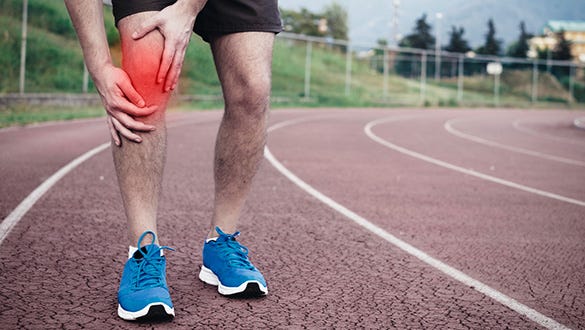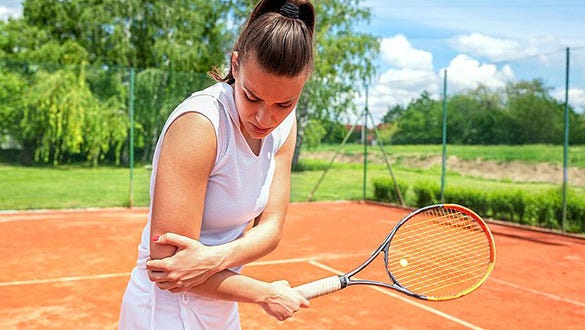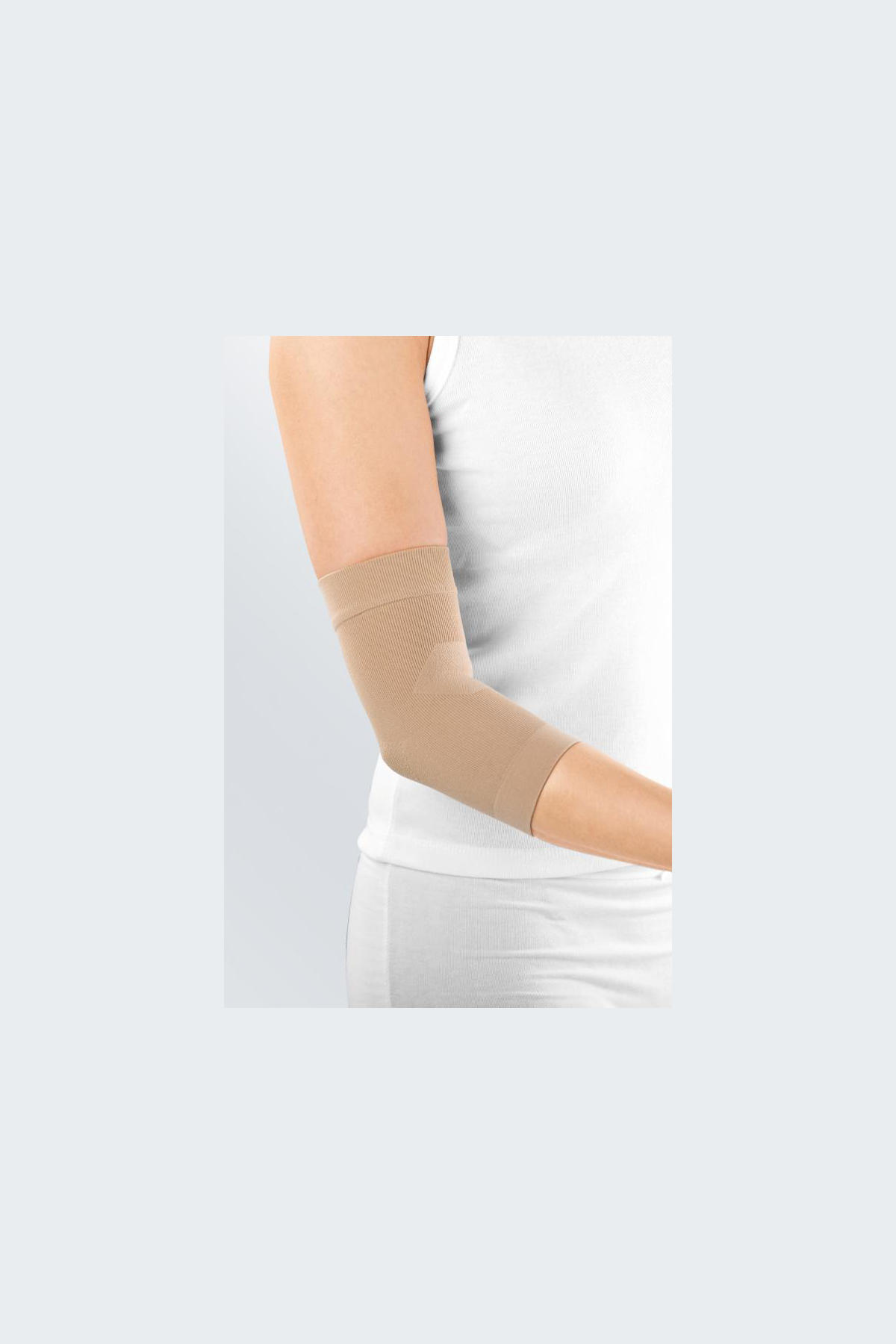- Free First Class Delivery
- Buyer Protection
- Secure Online Shopping
- Healthcare Professional? Click here
Tennis or golfer’s elbow?


Categories
What is tennis or golfer’s elbow: Definition of epicondylitis
Tennis elbow is a type of epicondylopathy (also referred to as epicondylitis, epicondylosis or epicondylalgia). This refers to the painful tendon irritation on the outside of the elbow (Epicondylopathia humeri radialis) caused by overuse. If the epicondylitis occurs on the inside of the elbow, this is referred to as golfer’s elbow (Epicondylopathia humeri ulnaris). Tennis elbow is more common than golfer’s elbow.
There are two types of epicondylitis:
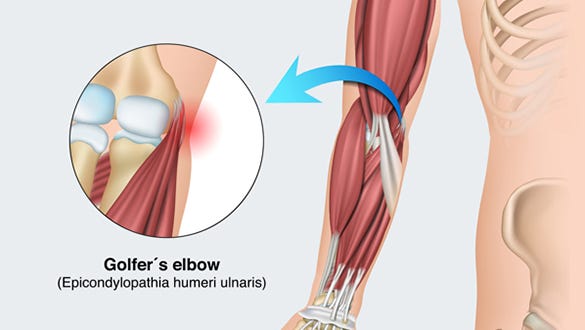

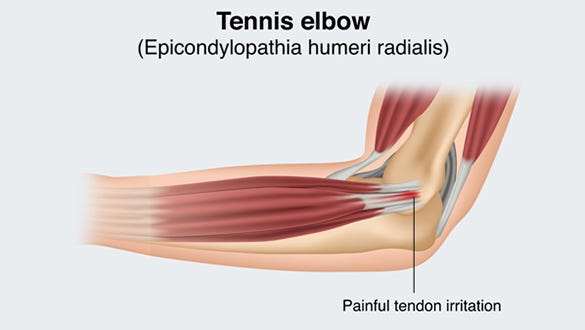

Tennis and golfer’s elbow: Causes and risk factors
All forearm muscles that are required for finger and wrist strength and movement are attached to the two bony prominences (epicondyles) of the humerus by the tendon insertions. If the muscles and tendons are strained, tiny tears and inflammation can develop near the epicondyle on the outside of your elbow.
Both excessive overloading caused by sporting activities, as well as monotonous low strain patterns of movement, can cause epicondylitis: Occupational overloading can lead to epicondylitis just as easily as excessive exercise. For example, people are often affected by straining their forearm muscles by typing on a keyboard, working with a PC mouse, performing manual activities and even practicing the violin.
Symptoms and signs that may indicate epicondylitis
- Elbow pain that is often worse when you use your arm, particularly twisting movements.
- Pain on the outside of your upper forearm, just below your elbow
- Pain when lifting or bending your arm
- Pain when writing or gripping small objects
- Pain and stiffness when fully extending your arm
With tennis elbow, the extensor tendons on the outside of the elbow are irritated. With golfer’s elbow, the flexor tendons on the inside of the elbow are affected.
How can tennis/golfer’s elbow be prevented?
Avoid common incorrect strain of the elbow joint:
- Play tennis with the correct technique and, if necessary, invest in training sessions.
- Use support pads when working at a computer and use an ergonomically-shaped mouse to relieve pressure on the forearm.
- If you do manual work, then tools such as a cordless screwdriver will make your life easier.
- Lift objects so that the palm of your hand is facing your body.
- And last but not least: Watch out for signs of overuse and take a break.
Treatment for epicondylitis?
Tennis elbow is self-limiting, which means it will eventually get better without treatment. However, the first advice is to change your usual patterns of movement in the workplace or when playing sports. The most important thing to do is rest the injured arm. Hold a cold compress against your elbow for a few minutes several times a day can help ease pain.
Therapeutic approaches can support the rapid healing of the symptoms:
- Soft Supports: These can relieve the irritated tendons. Many doctors or physios would recommend an elbow support. The compressive knit structure of these supports help to relieve inflammation and to ease the pain. The tendons are also relieved by the 3D pad and the strap.
- Operation: Invasive treatments, such as surgery, will only be considered in severe and persistent cases of tennis elbow, where non-surgical approaches have not been effective.
- Stretching exercises: Your GP may refer you to a physiotherapist is your epicondylitis is causing more severe or persistent pain. They may use manual therapy techniques such as massage and show you exercises that you can do to keep your arm mobile and to strengthen your forearm muscles.
- Steroid injections: You may be offered a steroid injection when other treatments haven’t worked but these are only likely to offer short-term relief.
- Shock wave therapy: Short, strong shock waves stimulate the body’s own healing process. It is non-evasive and can relieve pain and promote movement in the affected area. However it may not work in all cases.
Physio exercises for epicondylopathy
For medial tendon irritation (golfer’s elbow) or lateral irritation (tennis elbow), both the eccentric strengthening and the stretching of the muscles of the irritated tendons can promote the healing process. To maximise the benefits of the therapeutic exercises, patients should ideally perform the exercises three to four times a week.
Please first consult your doctor or physiotherapist to see whether the exercises are suitable for you.
Strengthening exercises
Exercise for tennis elbow
Equipment:
- No equipment required.
- Exercise performed seated.
Starting position:
- Sit on a stool next to a table.
- Place the forearm to be trained on the table.
- Position the wrist so that it freely extends over the edge of the table.
- The back of the hand points up toward the ceiling.
- Make a fist with the affected hand.
- Stretch the wrist of the affected hand as far as possible.
- Grasp the hand to be trained from above using your free hand.
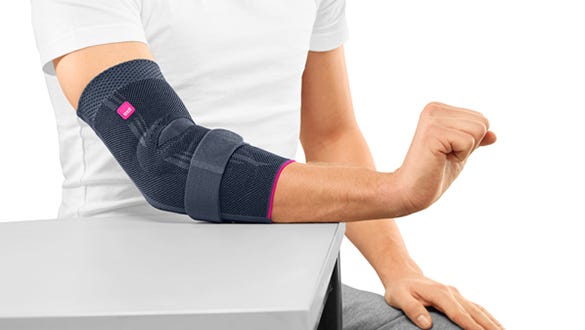

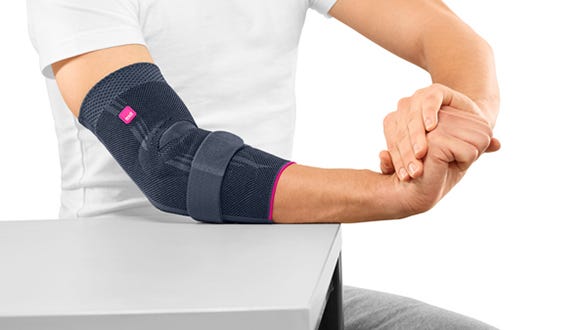

Exercise:
- Apply measured pressure on the back of the hand to be trained.
- Slowly (in slow motion!) allow the stressed wrist to give in.
- You may feel some mild pain while performing the exercise.
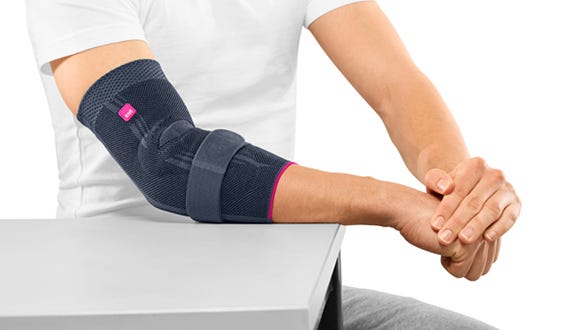

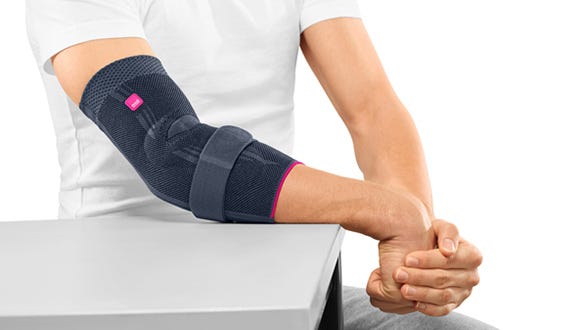

Note:
- Pressure should be metered out so that it is possible for the trained hand to yield slowly.
- Perform the exercise slowly and in a controlled manner.
Frequency:
- 3 sets x 15 repetitions
- 30 seconds rest in between sets
Exercise for golfer's elbow
Equipment:
- No equipment required.
- Exercise performed seated.
Starting position:
- Sit on a stool next to a table.
- Place the forearm to be trained on the table.
- Position the wrist so that it freely extends over the edge of the table.
- The palm of the hand points up toward the ceiling.
- Bend the wrist of the affected arm as far as possible.
- Grasp the hand to be trained from above using your free hand.


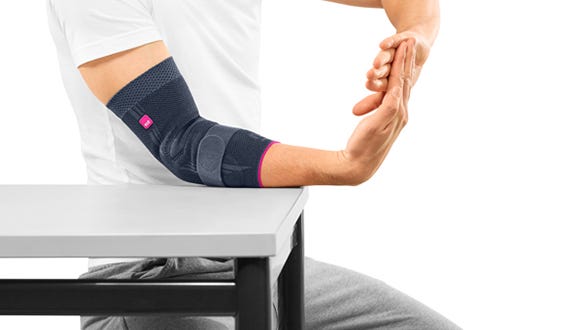

Exercise:
- Apply measured pressure on the palm of the hand to be trained.
- Slowly (in slow motion!) give in with the stressed wrist until the fingertips point toward the floor.
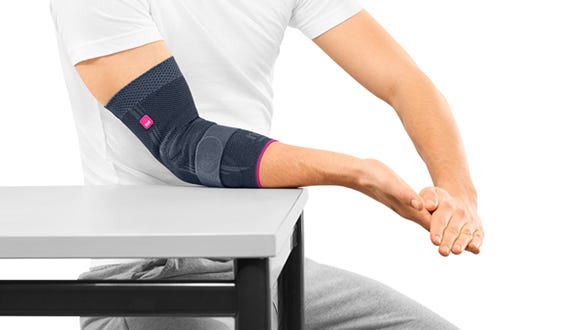

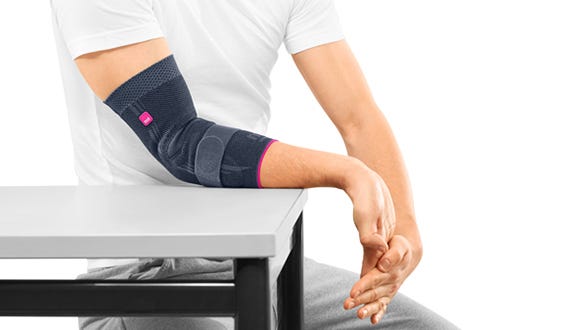

Note:
- The fingers and palm always form a line.
- A pressure should be chosen that makes it possible for the trained hand to yield slowly.
- The free hand covers the trained hand around the knuckles and fully encloses the fingers.
- Perform the exercise slowly and in a controlled manner.
Frequency:
- 3 sets x 15 repetitions
- 30 seconds rest in between sets
Stretching exercises
Exercise for tennis elbow
Equipment:
- No equipment required.
- Performed standing on firm ground.
Starting position:
- Stand upright and raise the arm to be stretched out in front of you at shoulder height.
- The arm and body form a 90-degree angle.
- Make sure the arm is always at maximum extension.
- The back of the hand faces upwards.
- Make a fist with the hand of the outstretched arm.
- Grasp the fist from above and to the side using your free hand.
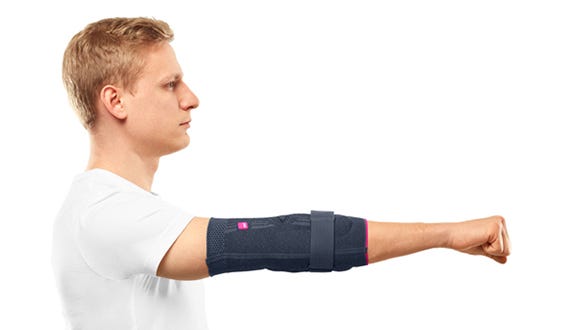

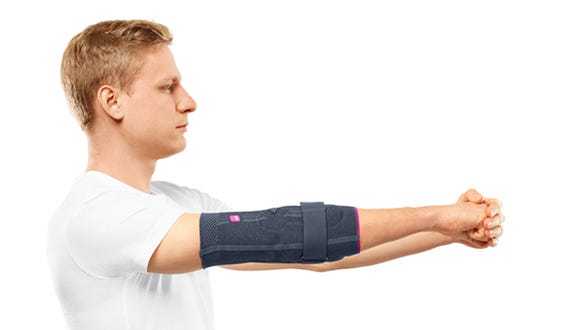

Exercise:
- Bend the wrist of the affected arm to the farthest it will go.
- Apply gentle pressure on the closed fist using your other hand until you feel tension in the area of the forearm extensor muscles.
- To increase the stretching effect, you can also slowly turn the affected arm outwards.
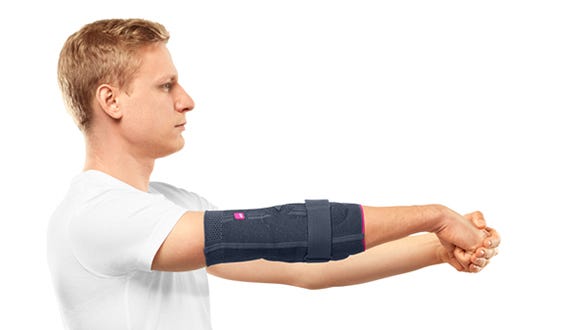



Frequency:
- 3 sets on each side, hold for 20 seconds
- 30 seconds rest in between sets
Exercise for golfer's elbow
Equipment:
- No equipment required.
- Performed standing on firm ground.
Starting position:
- Stand upright and raise the arm to be stretched out in front of you at shoulder height.
- The arm and body form a 90-degree angle.
- Make sure the arm is always at maximum extension.
- The palm of the hand faces upwards.
- Enclose the hand of the affected arm using your free hand.
- Surround all of the fingers of the affected hand.


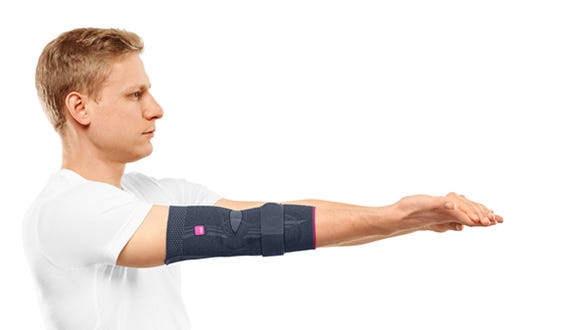

Exercise:
- Bend the wrist of the affected arm to the farthest it will go.
- The tips of the fingers point toward the floor.
- Apply gentle pressure on the enclosed hand using your other hand until you feel tension in the area of the forearm flexor muscles.
